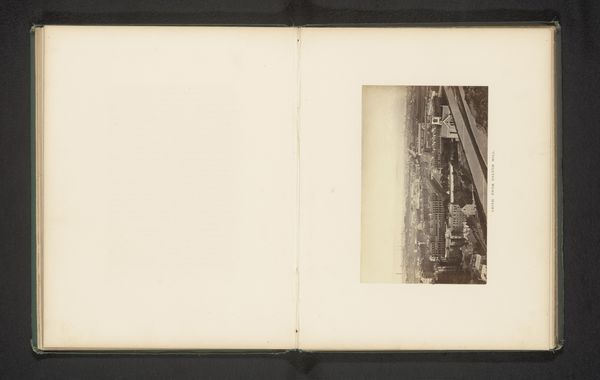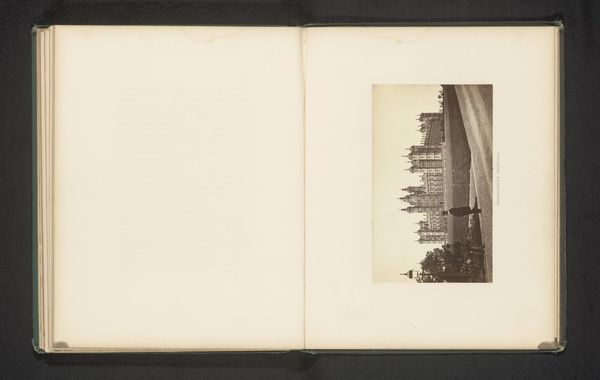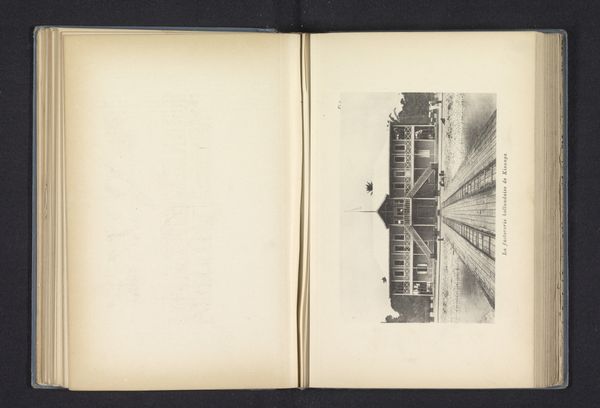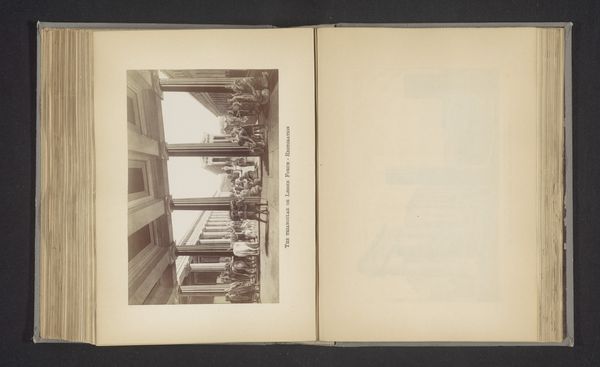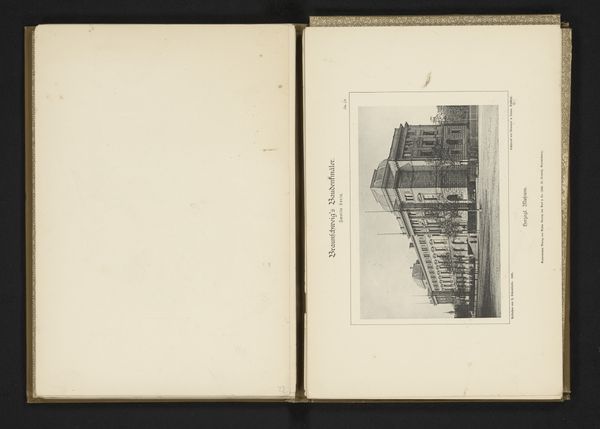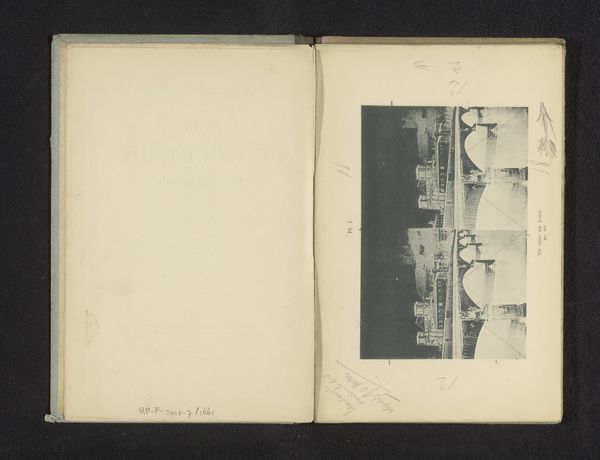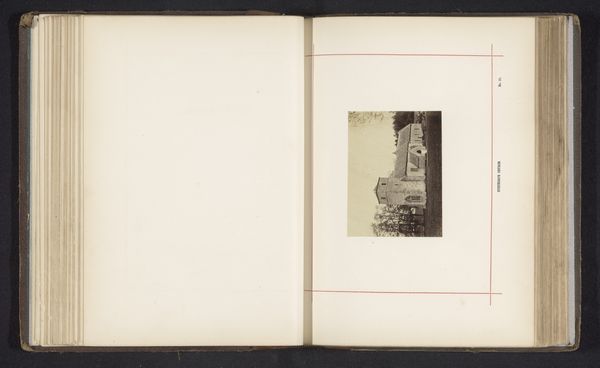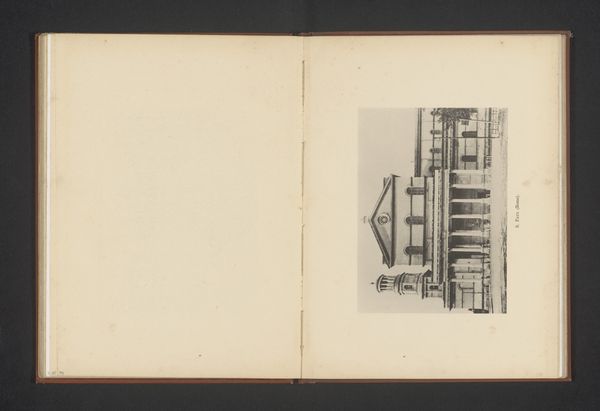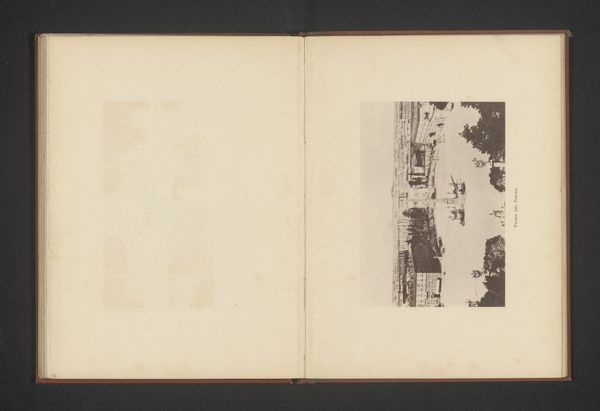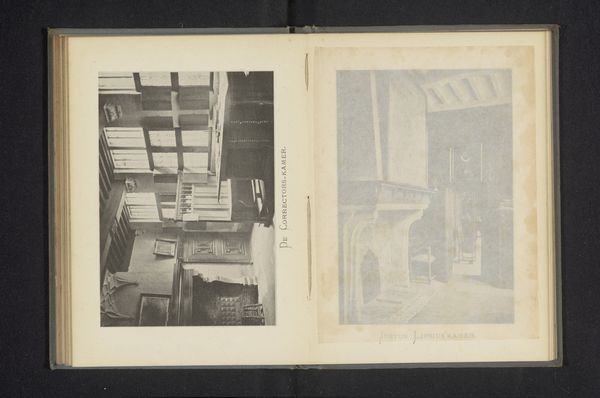
print, photography, architecture
#
aged paper
#
homemade paper
#
paperlike
# print
#
light coloured
#
landscape
#
paper texture
#
photography
#
ancient-mediterranean
#
folded paper
#
thick font
#
paper medium
#
design on paper
#
architecture
#
realism
#
historical font
Dimensions: height 121 mm, width 180 mm
Copyright: Rijks Museum: Open Domain
Editor: So, here we have a photographic print titled "Fotoreproductie van een gezicht op de Stabiaanse Thermen," dating from before 1895. It depicts, quite literally, a photograph in a book of an ancient building, the Stabian Baths. I’m struck by how this image invites me to consider themes of preservation, class, and the consumption of ancient cultures. How might we interpret this photograph within its historical and social context? Curator: That’s a fantastic observation! Given the historical moment in which this photograph was taken, we need to consider what this type of imagery was actually for. Tourism for wealthy Europeans was booming. What purpose did documenting the past serve for these visitors and those back home? Do you see any hints in this image related to how wealth or class impacted access to this site? Editor: I hadn’t considered tourism and accessibility. Looking at the image now, I do notice the figures placed within the ruins seem to be in leisurely dress, strolling, perhaps taking in the sights. This detail makes me wonder who, historically, had the luxury of experiencing and documenting these spaces. It makes me reflect on whose voices are absent from the frame. Curator: Precisely. Think about the broader imperial context of that era. The desire to document, categorize, and ultimately 'own' the past—was it purely an innocent act of scholarship? Or was there a deeper power dynamic at play? How did photography then, and now, contribute to the construction of history? Editor: I think, perhaps, that photographic documents of this nature could further enforce Western views on progress. Capturing ruins as such contributes to the belief in Western advancement. Curator: That’s insightful. By examining the history surrounding this image and similar works, we confront critical questions about cultural ownership, historical narratives, and the responsibilities that come with interpreting and preserving our shared past. Editor: This has made me consider the power that even a simple photograph can wield. Curator: Indeed, and I'm so glad we got to unpack those complexities today.
Comments
No comments
Be the first to comment and join the conversation on the ultimate creative platform.
